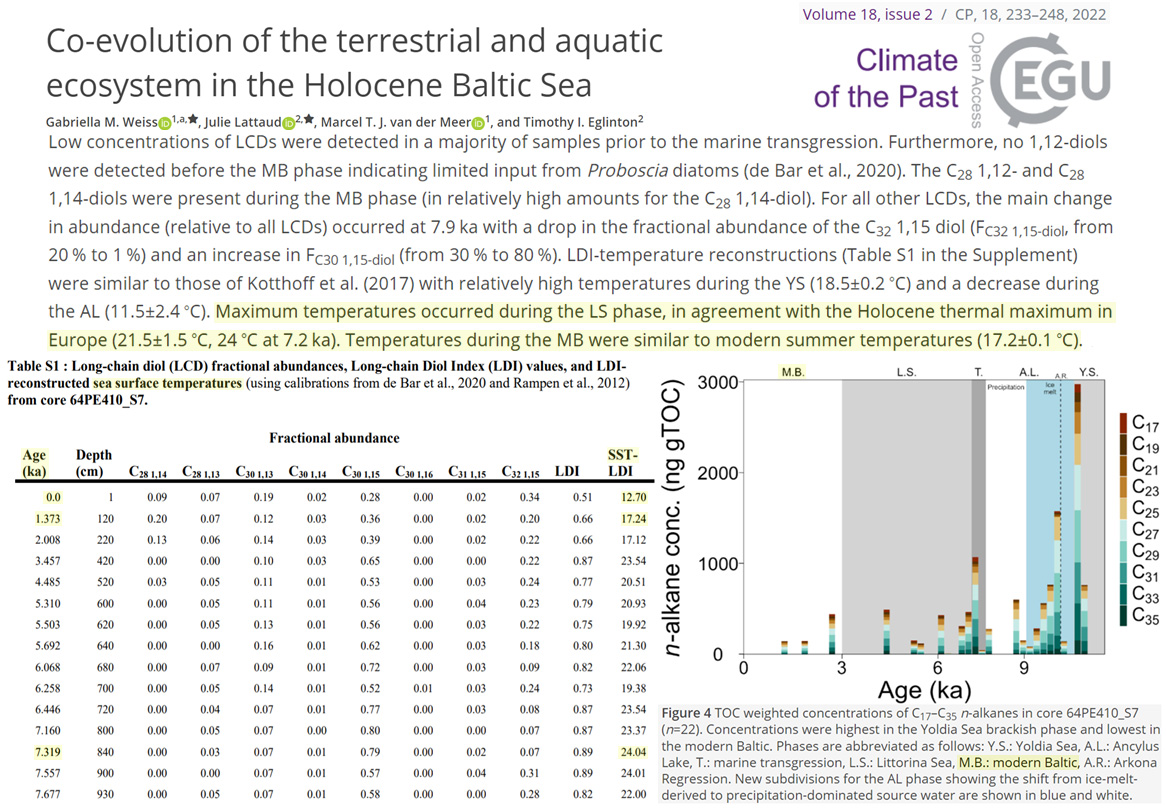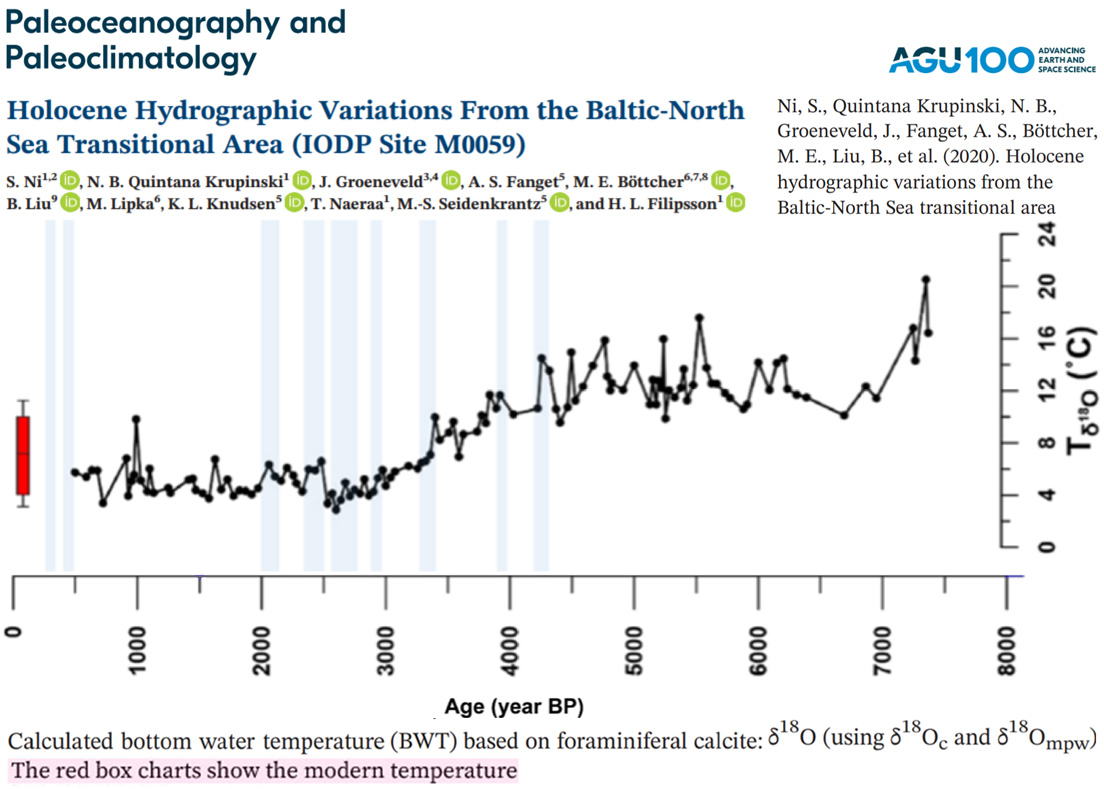Baltic Sea surface temperatures may have reached 24°C 7,200 years ago compared to the current 12.7°C.
A new study (Weiss et al., 2022) indicates Baltic Sea regional surface temperatures ranged between 21-24°C from ~5.7 to 7.7 ka (thousand years ago). This period is referred to as the Baltic’s Holocene Thermal Maximum.
Temperatures dipped to 17.2°C at 1.373 ka. (The time span ranging from 0.0 ka to 3 ka is referred to in the study as the Modern Baltic, or M.B.)
The current (0.0 ka) surface temperature for the Baltic S is 12.7°C. This temperature is more than 11°C colder than the Baltic’s temperatures at 7.2 ka.

Image Source: Weiss et al., 2022
The magnitude of the Holocene Thermal Maximum warmth relative to today has also been reported for the Baltic Sea subsurface. Bottom water temperatures were approximately 9 to 13°C warmer (~16-20°C) than they are today (~7°C) from about 7,200 to 7,400 years ago (Ni et al., 2020).






[…] New Study Suggests The Early Holocene’s Baltic Sea Temperatures Were 5-11°C Warmer Than Prese… […]
“Baltic Sea surface temperatures may have reached 24°C 7,200 years ago compared to the current 12.7°C.” A rational thinker may think cooling but as governments are setting the science standards these days, this study will be blown away as an autumn leaf.
The timing is very close to the Tsunami of 5500BC which flooded Droggerland.
Did Droggerland block the Baltic sea and was it just an inland lake?
That could easily explain the big temperature differences.
I like ” Droggerland” as a word, but the sunken land in the North Sea is known as Doggerland, underwater known to herring fisherman as the Dogger Bank.
Very good question – Doggerland was a prairie with mammoths – ivory has been pulled up.
Petroleum surveyors I know used to heli in on low tide, make soundings, and get out fast.
It looks like today’s Holland was made by that giant tsunami. So evidence of a fresh water lake might be like the case of the Black Sea.
The fresh water Black Sea was suddenly flooded by sea by a break in the Bosphoros, around that time. It had an inhabited shore. and fishermen know not to net too deep as 200m deep detritus is poisonous. Maybe, although likely long since washed away, such detritus could be found?
And I heard there were 2 tsunami’s over Doggerland.
I was actually going to sorta-ask the same question, but you beat me to it.
My understanding (consulted a book on my desk for this) is that the Baltic was actually the opposite of the Bosphorus – the “Baltic Lake” was held in by an ice dam, and as the big post-Younger-Dryas warming kicked in, in around 9600 B.C. the ice dam burst, the Baltic lake drained, and the Baltic Sea emerged.
The Bosphorus blockage had the opposite situation, where the ocean was higher than the freshwater lake – the Bosphorus blockage burst about 6600 B.C. (same book source for that).
[…] New Study Suggests The Early Holocene’s Baltic Sea Temperatures Were 5-11°C Warmer Than Prese… […]